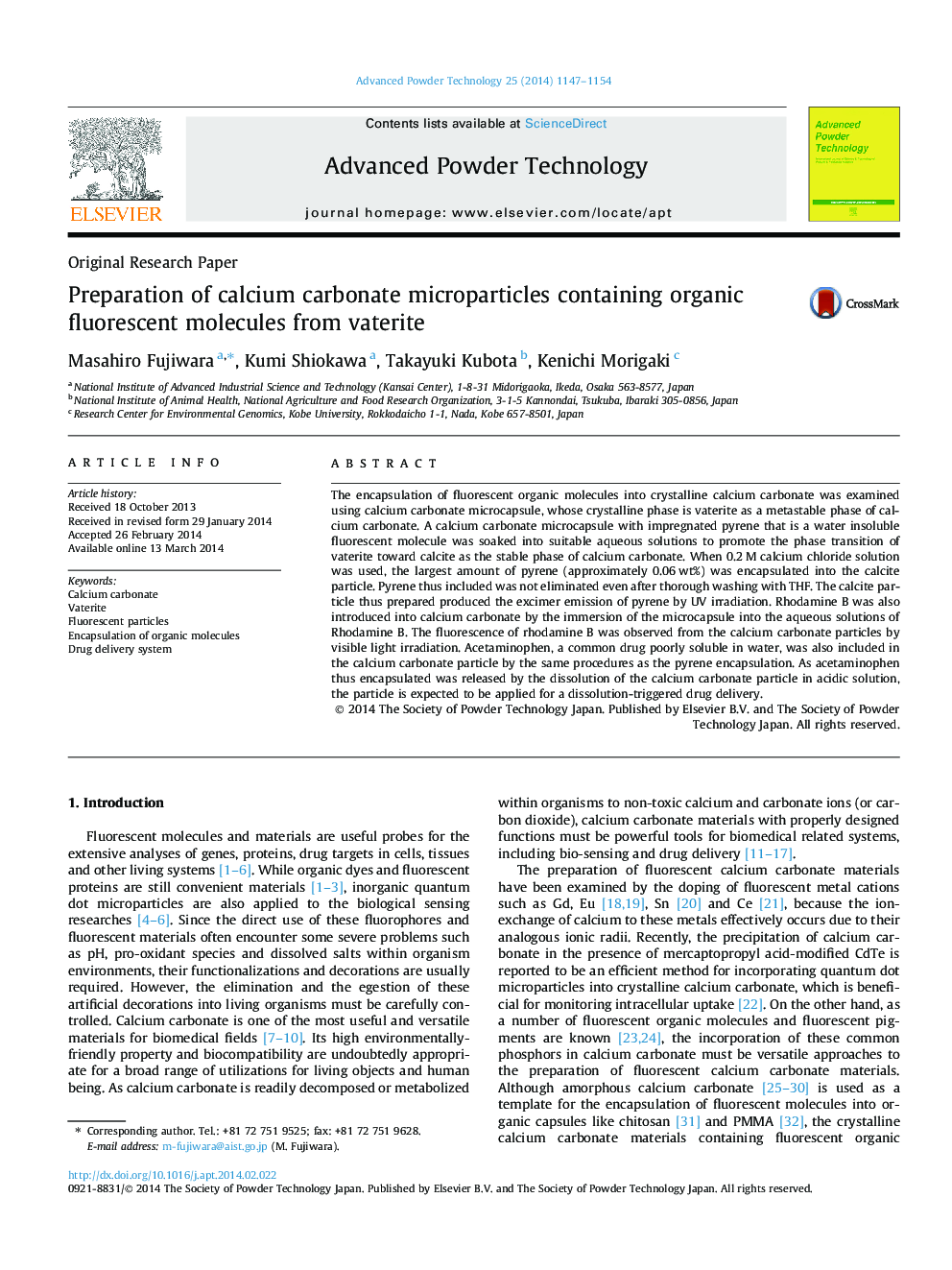| Article ID | Journal | Published Year | Pages | File Type |
|---|---|---|---|---|
| 144877 | Advanced Powder Technology | 2014 | 8 Pages |
•Phase transition of vaterite was effective for the encapsulation of molecules.•Fluorescent pyrene and rhodamine B were encapsulated into calcite calcium particles.•Acetaminophen as drug molecule was incorporated into calcium carbonate.•Calcium carbonate particles encapsulating pyrene and rhodamine B were fluorescent.•Dissolution of calcium carbonate discharged acetaminophen encapsulated.
The encapsulation of fluorescent organic molecules into crystalline calcium carbonate was examined using calcium carbonate microcapsule, whose crystalline phase is vaterite as a metastable phase of calcium carbonate. A calcium carbonate microcapsule with impregnated pyrene that is a water insoluble fluorescent molecule was soaked into suitable aqueous solutions to promote the phase transition of vaterite toward calcite as the stable phase of calcium carbonate. When 0.2 M calcium chloride solution was used, the largest amount of pyrene (approximately 0.06 wt%) was encapsulated into the calcite particle. Pyrene thus included was not eliminated even after thorough washing with THF. The calcite particle thus prepared produced the excimer emission of pyrene by UV irradiation. Rhodamine B was also introduced into calcium carbonate by the immersion of the microcapsule into the aqueous solutions of Rhodamine B. The fluorescence of rhodamine B was observed from the calcium carbonate particles by visible light irradiation. Acetaminophen, a common drug poorly soluble in water, was also included in the calcium carbonate particle by the same procedures as the pyrene encapsulation. As acetaminophen thus encapsulated was released by the dissolution of the calcium carbonate particle in acidic solution, the particle is expected to be applied for a dissolution-triggered drug delivery.
Graphical abstractFigure optionsDownload full-size imageDownload as PowerPoint slide
